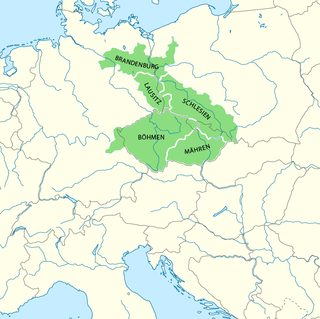Bohemian Palatinate

Bohemian Palatinate (Czech: Česká Falc, German: Böhmische Oberpfalz), since the 19th century also called New Bohemia (Czech: Nové Čechy, German: Neuböhmen), is the historical area in the northeast of present-day Bavaria (Germany), which from 1353 onwards was incorporated into the Lands of the Bohemian Crown by Emperor Charles IV. Bohemian Palatinate lies in the north of the Upper Palatinate, its territory stretched up to Upper and Middle Franconia close to the Imperial City of Nuremberg.
History
Already in 1322, Emperor Louis IV had pawned the Egerland region to King John of Bohemia of the House of Luxembourg. John's son, Charles IV, who also succeeded Louis as Emperor, rivalled with the houses of Habsburg and Wittelsbach and aimed at the aggrandizement of his hereditary lands, in order to win influence on the Princes of the Holy Roman Empire. Charles obtained the approval by the Prince-electors to affiliate the Imperial City of Eger (Cheb) with the Bohemian kingdom. In 1349 he married Anne of Bavaria, daughter of the Wittelsbach count palatine Rudolf II of the Rhine, who held the adjacent lands in the Bavarian Nordgau (the later "Upper Palatinate" region). However, Charles had to abandon his hope to be heir to his father-in-law's estates upon Anna's early death in 1353.
In 1353 Charles gained 24 Palatinate estates from Rupert I in compensation for his debts. To these he joined other territories and the whole region incorporated into the Crown of Bohemia in 1355. Administrative center of this area was in Sulzbach-Rosenberg, while for representational purposes Charles built the Lauf Castle. The Emperor intensively supported the area through tax reliefs for craftsmen and traders, as well as other privileges for settlements and markets.
In 1373 Charles ceded the greater part of area back to the Wittelsbachs in exchange for the Electorate of Brandenburg. Wenceslaus IV lost the rest in 1401.[1] However, some sites acknowledged suzerainty of Bohemian rulers until the 19th century.